Recent Articles
Popular Makes
Body Types
Driving With Dogs: 10 Mistakes You Didn't Know You Were Making
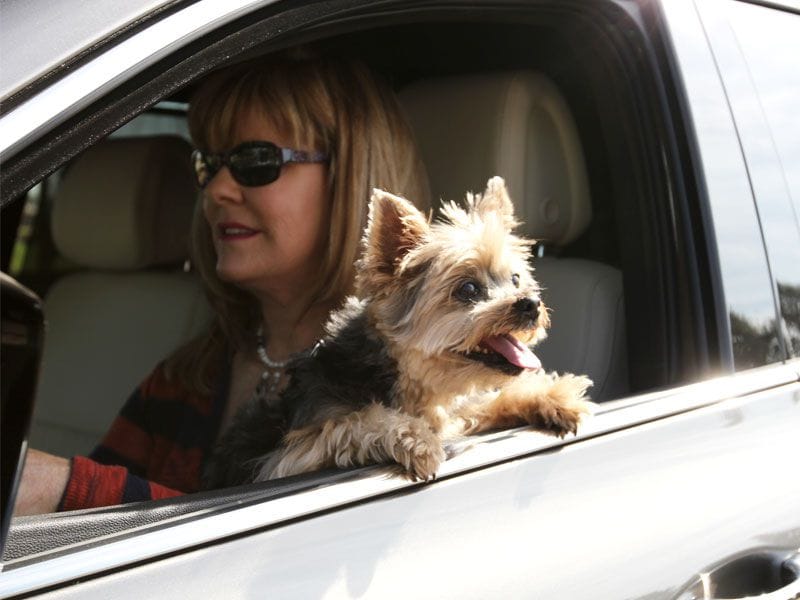
Driving with Dogs unrestrained ・ Photo by TJ Keon
With almost 78 million dogs in the U.S., it’s astounding that a whopping 80% of them ride unrestrained in vehicles. Pet travel is on the rise and pet owners are now starting to take pet passenger safety seriously — and so is law enforcement. Unrestrained pets in a vehicle can be just as distracting as texting while driving, so this is a serious concern for all drivers on the road. (Source: American Pet Products Association.) Our dog model, Jasper, simulates one mistake we'll point out - allowing an unrestrained dog making his way to the front seat of this 2015 Subaru Outback.
So let's see what other mistakes are unfortunately typical when driving in cars with dogs.
Written by: Lindsey Wolko, Founder, Center for Pet Safety. All CPS pet safety research was funded by Subaru of America, Inc.
1) Allowing your dog to feel the wind in its ears.
Letting your dog stick its head out of the window during your road trip is a vet bill waiting to happen. Debris in the eyes is very painful for your pooch and may cost him his vision. We have windshields to deflect road debris during our ride - pets are just as vulnerable as we are and need protecting too. Dogs get sand in their eyes and nose, or worse, they get hit by the random flying rock. Think about it. What happens to your dog if you have to slam on the brakes or swerve because of another driver? Your pup could be suddenly ejected from the vehicle or suffer a broken neck. Not pleasant to consider, but it happens more often than you think.
Our dog model, Cheyenne, shown simulating an unrestrained ride in the 2016 Kia Sedona, is a 2-year-old German Shepherd in need of a loving home. Get her adoption information at German Shepherd Rescue of Orange County.
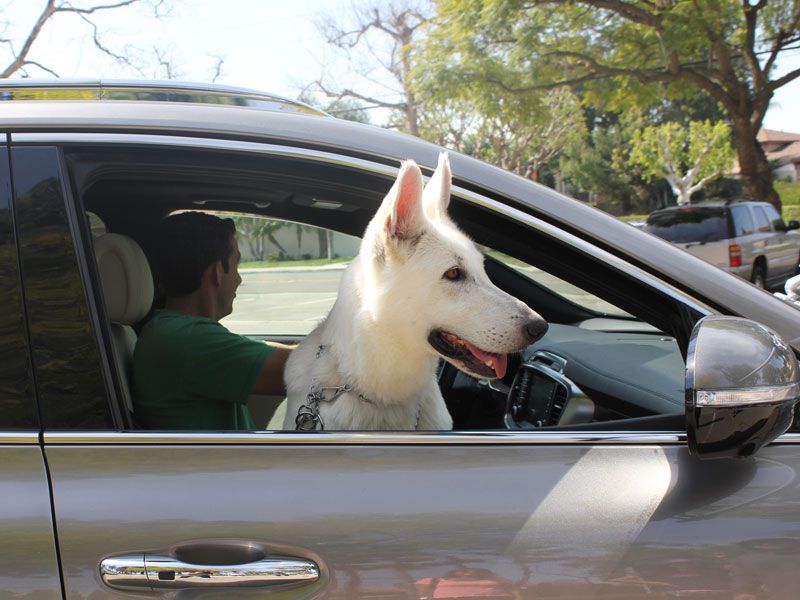
Photo by TJ Keon
2) Appointing your Dog as co-pilot.
One of the worst things you can do when traveling is to let your pup ride shotgun in your car. Allowing your dog to ride in your lap is illegal in the State of Hawaii, and it’s a ticketable offense in other parts of the country. It’s also incredibly dangerous. Not only can your pet become a serious distraction, but in the case of a crash, airbag deployment can be lethal. Your pup can suffer blunt force trauma from hitting the dashboard or he can be ejected from the vehicle. Essentially, your dog is at significant risk when riding in the front seat.
Our dog model, Anya, shown simulating this mistake in the 2016 Kia Sedona, is a German Shepherd who has been adopted since this photo shoot occurred, thanks to German Shepherd Rescue of Orange County.
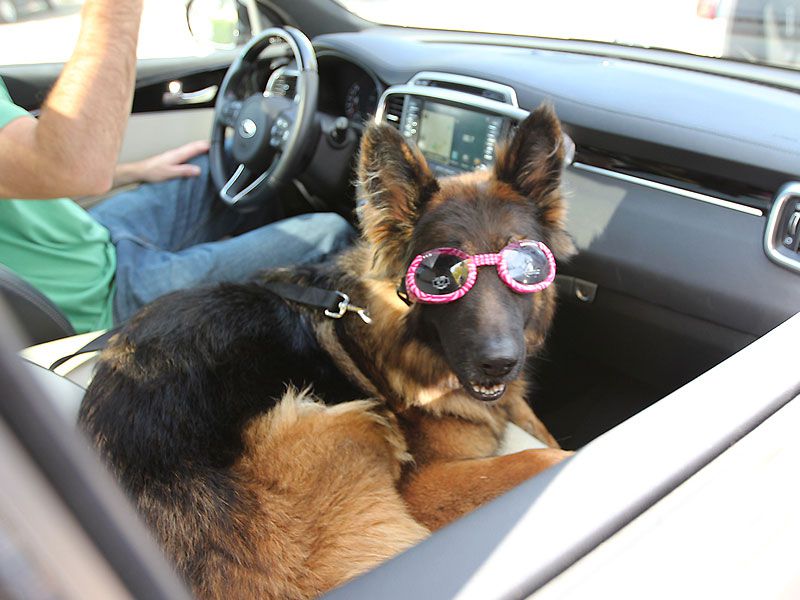
Photo by TJ Keon
3) Driving with unrestrained pets in the vehicle, risking driver distraction.
Unsecured pets are a major disruption in the vehicle. They can cause blind spots in your field of vision and increase risky behaviors when you have one hand on the wheel and the other on the dog. Pet distractions are such a serious problem, some states are now ticketing people who allow their pets to travel free and easy in the car under the distracted driving laws. Driving in New Jersey with an unrestrained pet? Be prepared to pay up to a $1,000 fine.
Keep pets properly restrained in the back seat of the vehicle and remember, when it comes to selecting a pet travel safety device, there is a significant difference between distraction prevention and crash protection.
Our model, Collin, shown simulating this mistake in the parked 2016 Kia Sedona, is an 11-month-old mixed lab awaiting a loving home. To adopt him, visit Labradors and Friends Dog Rescue.
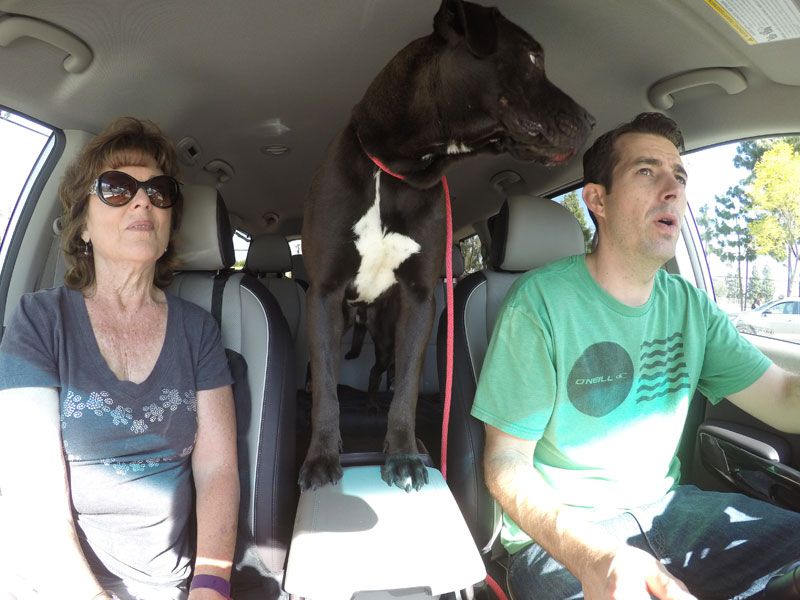
Photo by TJ Keon
4) Not fully understanding the perils of an unrestrained dog.
Still not convinced that Fido needs to be safely secured during travel? Veterinarians report that pets in a crash can suffer from blunt force trauma, including broken necks, spinal injuries leading to paralysis, ACL tears and other associated bumps and bruises. Some pet owners have reported spending tens of thousands of dollars reclaiming their pet’s mobility after a crash. Pets can also become dangerous projectiles, putting you and your other passengers at risk. A tiny 10lb. dog can exert a hefty 200 lb. force at just 20 mph. A 75 lb. Labrador Retriever exerts a whopping 2,200 lbs. of force at 30 miles an hour. Using a thoroughly tested pet travel restraint will help protect not only your pet, but also you and your other passengers.
Our tiny model, Harley, jumped in our 2016 Kia Sedona test car to help us simulate this common doggie mistake.
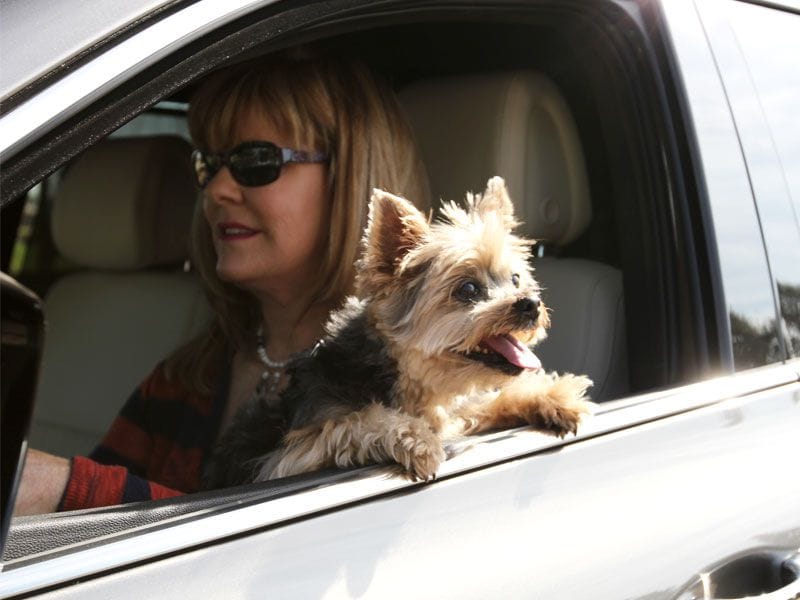
Photo by TJ Keon
5) Allowing dogs to ride in back of pickup trucks.
We’ve all seen them, the poor pup who has been forced to ride in the back of the pickup truck with nothing to protect him from the elements, or worse, a crash. In 2013, the American Humane Association (AHA) reported that over 100,000 dogs die every year from riding unrestrained in the back of pickup trucks. Dogs jump out of pickups into on-coming traffic or tumble out of the pickup bed during a sudden stop.
Some states like Connecticut, New Hampshire, Oregon, and Rhode Island, have laws on the books that require pets to be secured when they travel in the back of a pickup. Other states, like Louisiana have vetoed legislative efforts to secure pets traveling in open pickup trucks. Securing your pet isn’t just for the benefit of the pet, but also for the safety of other drivers on the road. It is best to check with your state’s legislative office to understand the rules of the road when it comes to pet travel.
While it is preferred to secure your pet safely inside of the vehicle, if you must travel with your dog in the back of the pickup, look to Gunner Kennels to lead the way in safety. Their G1 Intermediate with strength-rated anchor straps was designed with the hunting dog in mind and safely secures in the back of a pickup truck to protect your pup. It was named a Center for Pet Safety Top Performer in 2015.
Our helper, Blossom, shows us how not to ride in the back of this parked Chevrolet Silverado.
(Note: AHA did not respond to multiple inquiries to substantiate the above-mentioned statistic.)
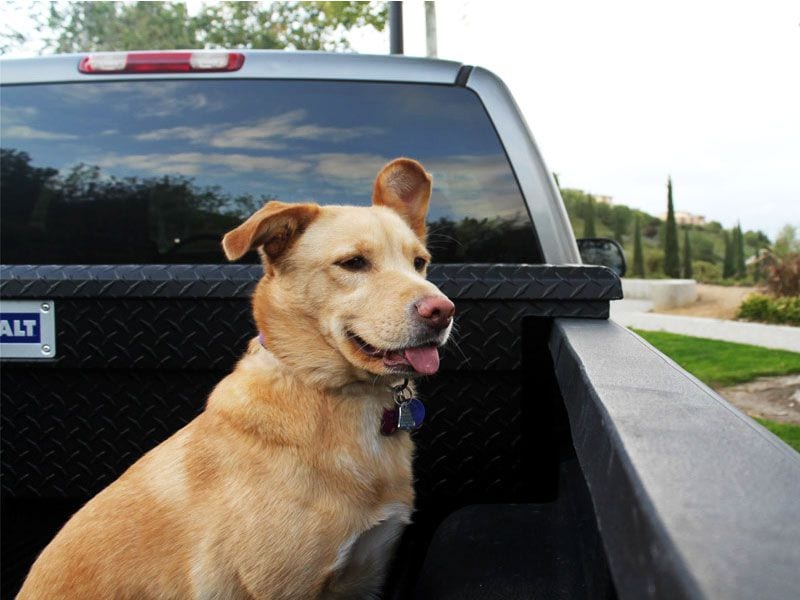
6) Warm days and hot dogs - a bad combination.
Did you know that on a 70 degree day, the temperature in your car can climb to over 115 degrees within minutes? That’s hot enough to cause your pet a serious, potentially life-threatening heat stroke. In Tennessee, state law allows concerned citizens to break into cars if they suspect a dog is at risk in climbing temperatures, and more states, such as New York, are now considering similar legislation.
If you see a pet in need of emergency attention, call police and wait for them to arrive—don’t take action yourself. It’s also important to know that pet theft is on the rise. The American Kennel Club has reported a consistent increase in stolen dogs year over year since 2008. Just as leaving a valuable laptop or GPS device in your vehicle might be tempting for a criminal, so is leaving your dog in the car. Even if the crook breaks a window to steal only your GPS device, your dog could still escape the vehicle and run away.
Never, ever leave your pets alone in a vehicle. Always opt to leave them home in an air-conditioned space if you have errands to run. The consequences are just not worth the risk.
Braxton, a 1-year-old German Shepherd, took just 15 seconds in this 2016 Kia Sedona, to demonstrate what you should never do to your precious pet. If you're interested, Braxton is available for adoption at German Shepherd Rescue of Orange County.
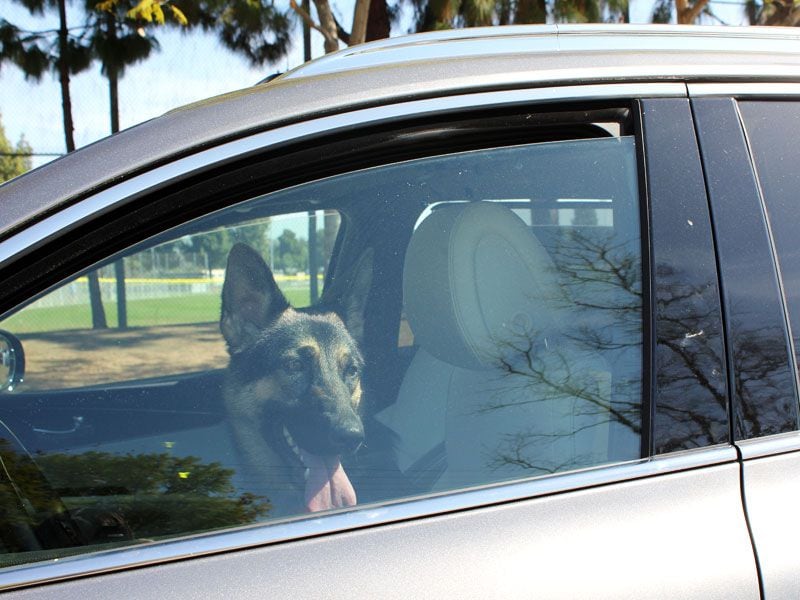
7) "I got this harness at the pet store, so it must be safe."
When selecting a travel device for your pet, know that there are two levels of protection: Distraction Prevention and Crash Protection. While all restraints may prevent distraction, not all will offer crash protection. Pet stores typically stock products that have good retail margins. Remember, there is little to no oversight of the $60 Billion pet products industry and manufacturers embellish their safety claims. While many brands claim to be travel “safety” devices, if you are looking for protection in a crash, there are few that actually hold up to those claims.
Crash Testing has become the new marketing catch-phrase promoted widely in the pet products industry, but until recently it was not well defined. Pet owners need to do their research to understand how a product performs in a crash. The Center for Pet Safety has been independently crash testing pet travel devices since 2011 and you can review the Top Performing products on our website.
Our best "Houdini," Blossom, in the 2015 Ford Escape, demonstates how effortless it is to escape from the Easy Rider harness.
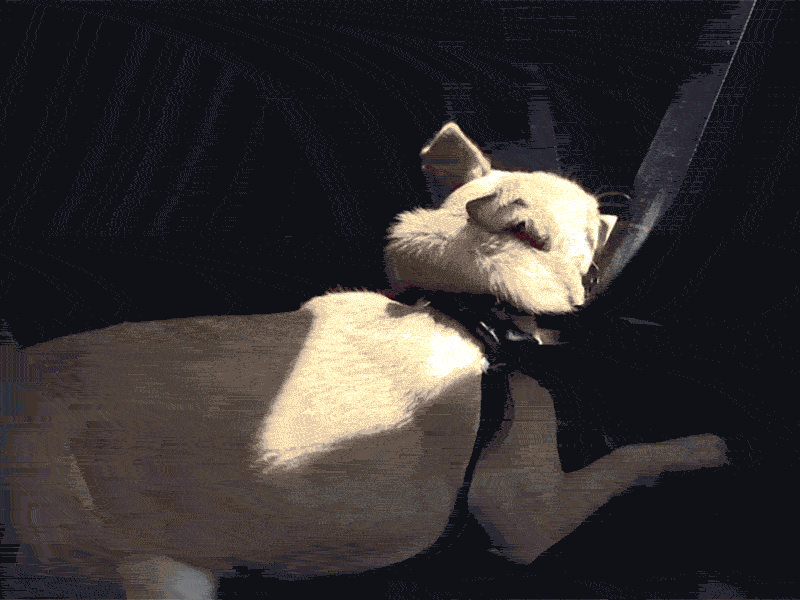
8) Insufficient planning when traveling with your precious pup.
Pet passengers require special planning to ensure the best possible travel experience for the both of you. Is your pup prone to carsickness? Feed your pet at least two hours before hitting the road to allow proper digestion. It’s also a good idea to exercise your pup before getting in the car. A tired pup is a better pet passenger.
Plan your trip so that you stop every two hours to walk and water your pet and remember to also bring the proper equipment needed to pick up after your pooch. And it’s important to remember that a highway rest stop is not necessarily the most sanitary place to stop with your pet—especially with puppies that have not had all of their shots. Take a detour and walk your pet away from the highly traveled road.
Townz, a 9-year-old female lab mix, enjoys a water break after riding in the 2016 Kia Sedona. Townz can be adopted at Labradors and Friends Dog Rescue.
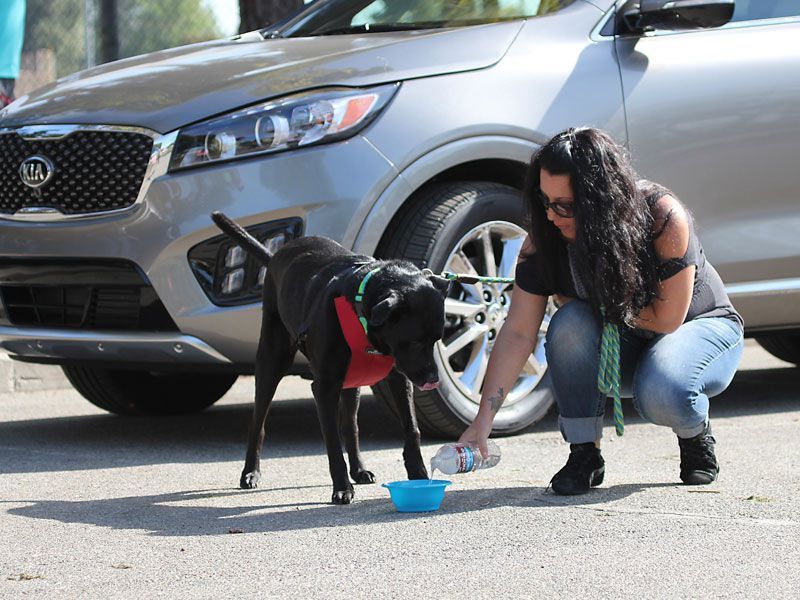
Photo by TJ Keon
9) Driving with projectile toys, bones and other dangerous missiles.
Giving your dog a bone on the trip? Don’t. It’s best to forego any chew toys during your time in the car. If your dog chokes, it will cause you to panic and veterinary care may not be readily available. Additionally, toys made of bones, antlers, and heavy rubber can become dangerous projectiles in the case of a crash.
Keep things simple when traveling and allow toys only when you reach your destination and you can properly supervise your pet’s playtime.
Collin got a chance to demonstrate this mistake with his rawhide bone prop in the 2016 Kia Sorento. Collin is an 11-month-old mixed lab waiting to be adopted at Labradors and Friends Dog Rescue.
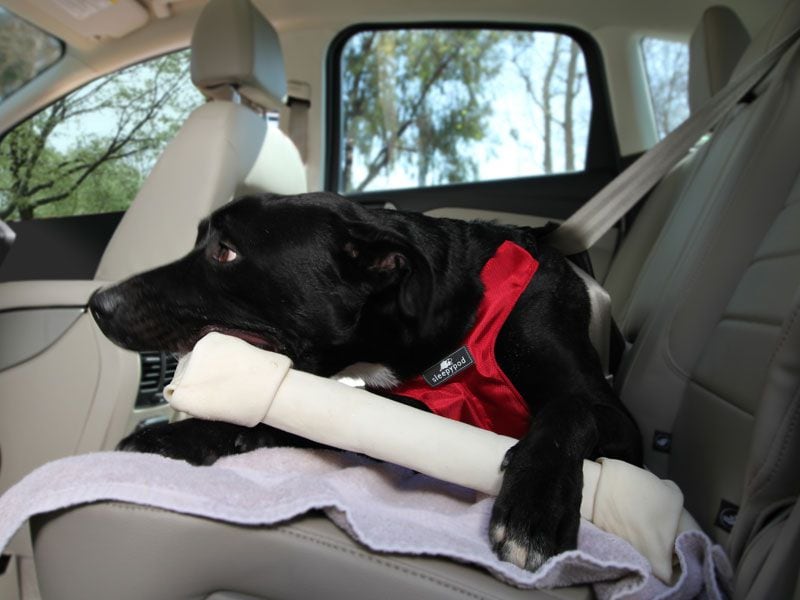
10) Not treating our dogs as well as we treat our children.
When you think about it, dogs, like children, are just as dependent on us to ensure their safety. Are children allowed to ride on your lap? Are they allowed to stick their head out of the window of the car to catch the wind in their hair? Are they allowed to ride without being buckled in? There are laws in place to ensure parents use safety measures when traveling with their children. These measures offer children the best possible chance of survival if you are involved in a crash during your trip.
Just like a toddler, a dog can’t buckle up and it’s up to us, the pet parents, to make those sometimes tough, responsible decisions about our pet's safety when we travel together. Always restrain or contain your pet during your travels. Better safe than sorry.
Subaru hilariously demonstrated how we should treat our dogs like humans in its commercial spot, "What's the Fuss," as a family with a pup in a child safety seat all barked at a mail truck while driving a Subaru Impreza. Subaru, effectively uses humor to get a very serious message out there - always do everything within your power to make sure your pet is safe and secure in your car.
Autobytel would like to thank the Labradors and Friends Dog Rescue and German Shepherd Rescue of Orange County for providing us with adoption-ready dogs as models for our photo shoot.
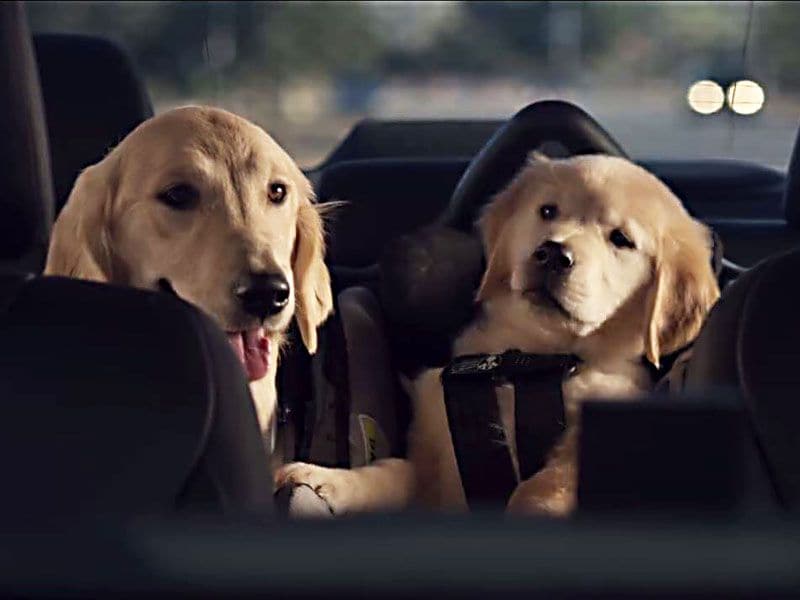
Photo by Subaru Media